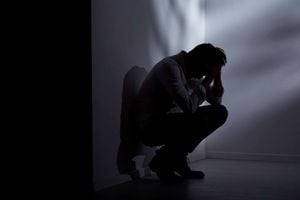Preventing HIV transmission during pregnancy, birth and breastfeeding

The baby should be exclusively breastfed for the first six months.
What you need to know:
- The baby should be started on preventive anti-retroviral medication as soon as possible after birth.
Dear doctor,
My cousin is HIV-positive. She has been married for the past two years, and she is currently pregnant. I don’t know the status of her husband, but she says that her baby will be HIV-negative. How is this possible?
Dear reader,
I |
t is possible for a woman living with HIV to give birth to a HIV negative baby and continue to care for the baby and breastfeed without the baby getting infected.
This begins by preventing mistimed pregnancies, preventing transmission of HIV from mother to child and providing good quality HIV care and treatment for women living with HIV and their families. Prevention of HIV transmission from mother to child can be achieved by:
Early identification of the infection in the mother. This is why HIV testing is part of the tests that are done at the first ante-natal visits, and for those who test negative, the test is repeated throughout the pregnancy, delivery and breastfeeding.
Same-day initiation of anti-retroviral treatment for those who test HIV positive
For women who are already living with HIV and those who start HIV treatment during pregnancy or breastfeeding, it is necessary to take anti-retroviral medication daily, as prescribed. The goal of taking the medication is for the level of the virus to be very low, to the level of not being detected by a viral load test.
Notifying the health care team during pregnancy and delivery about the HIV status so that the necessary monitoring can be done, and special care can be taken during the delivery process.
It is important to also let the team that is taking care of the baby know that the baby is HIV exposed so that the baby can receive timely prevention medication and necessary tests. The vaccination schedule is also slightly different.
The baby should be started on preventive anti-retroviral medication as soon as possible after birth and continue with the medication until six weeks after the baby stops breastfeeding
The baby should be exclusively breastfed for the first six months. This means that the baby should be fed only on breastmilk, without mixing with any other foods or drinks, except the medication. At six months, when complementary feeding starts, breastfeeding can continue as long as the HIV prevention medication is also being taken. If the mother has challenges with exclusive breastfeeding in the first six months, she can be supported at the clinic where she is receiving care The baby gets tested for HIV at regular intervals until the time when breastfeeding stops
With timely care and support, your cousin can have a baby who is not HIV infected
Hello doctor.
I am reaching out to seek your professional advice regarding an issue I experience every time I shave my pubic hair. After shaving, I frequently feel an uncomfortable itching sensation in my private parts. This becomes quite bothersome, especially when I am in public, as the urge to scratch is embarrassing and difficult to manage. Despite this, I find it uncomfortable to leave the hair unshaved, so I continue with the routine. However, the constant itching after shaving has me concerned, and I would appreciate your guidance on how to address this. Is there something I might be doing wrong, or could there be a specific treatment or method I can use to prevent this itching?
Dear reader,
The itching sensation you experience after shaving is likely to be due to razor burn. This is skin irritation that develops after shaving and may last for a few hours to several days. It can happen in any part of the body where hair has been shaved, and the skin becomes itchy, or there’s pain or a burning sensation, and the skin may be red in appearance.
Razor burn may happen as a result of:
Dry shaving - shaving without using any water, soap or shaving cream
Using a dull/blunt razor to shave
Shaving opposite to the direction that the hair is growing
Shaving too fast
Using shaving products that irritate the skin
Having sensitive skin
To manage razor burn, you can apply a cool cloth on the area or use a moisturiser. Aloe Vera gel also helps to resolve razor burn. If the itching persists or new symptoms develop, then it is advisable for you to be reviewed by a medical professional for treatment of any underlying conditions. You can reduce the occurrence of razor burn using a sharp razor and shaving just after or during a shower, and making sure to always use soap or a shaving cream when shaving. Shave slowly using short and light strokes, and in the direction that hair is growing. Clean out the blade after each stroke to remove soap and hair while you are shaving. Rinse your skin after shaving and apply a moisturiser, wear cotton underwear and avoid wearing tight underwear or clothing immediately after shaving. The razor should be cleaned after shaving, stored in a clean and dry place and replaced after five to seven shaves or once it gets rusty. Exercise can make razor burn worse.
Another possible cause of the itching is pseudofolliculitis barbae. This an itchy rash that develops after shaving because the growing hair penetrates the skin again (ingrown hair), causing skin inflammation and bumps on the skin. It is managed like razor burn and can be prevented by avoiding shaving and only trimming the hair. In addition, there may be infection of the bumps, requiring antibiotic treatment.
Send your questions to [email protected]




